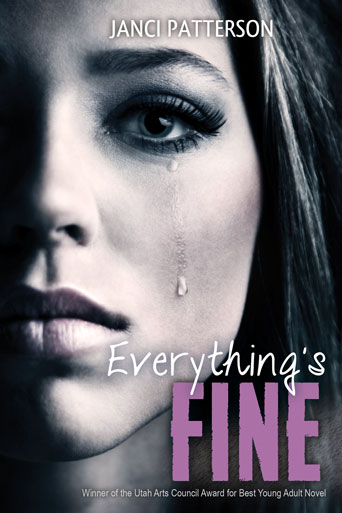See this?
That would be my cover for Everything’s Fine, my novel that will be out next month. NEXT MONTH. I am so excited to show this to you. IMHO, my cover designer, Melody Fender, did a truly beautiful job.
This is my favorite part of writing novels–the part where they’re all pretty and finished. This is my book that won the Utah Arts Council Original Writing Competition award for Best Young Adult Novel back in 2007 (under its working title, Haylee’s Journal), so it’s been in the works for a while. I am so excited to finally get to show it to you.
Release dates are a little squirrely for indie books, but it’ll be out sometime next month. If you’d like an email when it’s properly released, please sign up for my newsletter. I promise no spam. You’ll only hear from me about new books, and maybe sales.
Want more?
Here’s the back cover copy.
I really hope you’re as excited about this as I am.
Kira thought she knew everything about her best friend, Haylee. But when Haylee commits suicide immediately after her first date with her longtime crush, Bradley Johansen, Kira is left with nothing but questions, and a gaping hole in her life where Haylee used to be.
Kira is sure that the answers to her questions must be written in Haylee’s journal, but she’s not the only one searching for it. The more Kira learns about Haylee’s past, the more certain she is that other people grieving for Haylee are keeping secrets—especially Bradley, and Haylee’s attractive older cousin Nick. Kira is desperate to get to Haylee’s journal before anyone else finds it—to discover the truth about what happened to Haylee—
And to hide the things that Haylee wrote down about her.


